Are you thinking about welcoming a new fluffy member to your family? If so, you might be wondering about how to get an older cat to like a kitten. Older cats can be stuck in their ways and enjoy soaking up all our attention, so adding a third wheel to this dynamic doesn’t always end well!
To have a happy feline family, the kind you always dream of, you’ll have to really consider whether a kitten is the right choice.
And if they are, you’ll need to do everything you can to make their introduction and transition as smooth and stress-free as you can, to maximize your chances of long-term relationship success.
So we’ll be answering your happy family faqs about building a happy feline family, including the best approach for introducing a kitten to your older cat.
Getting a Senior Cat to Like a New Kitten
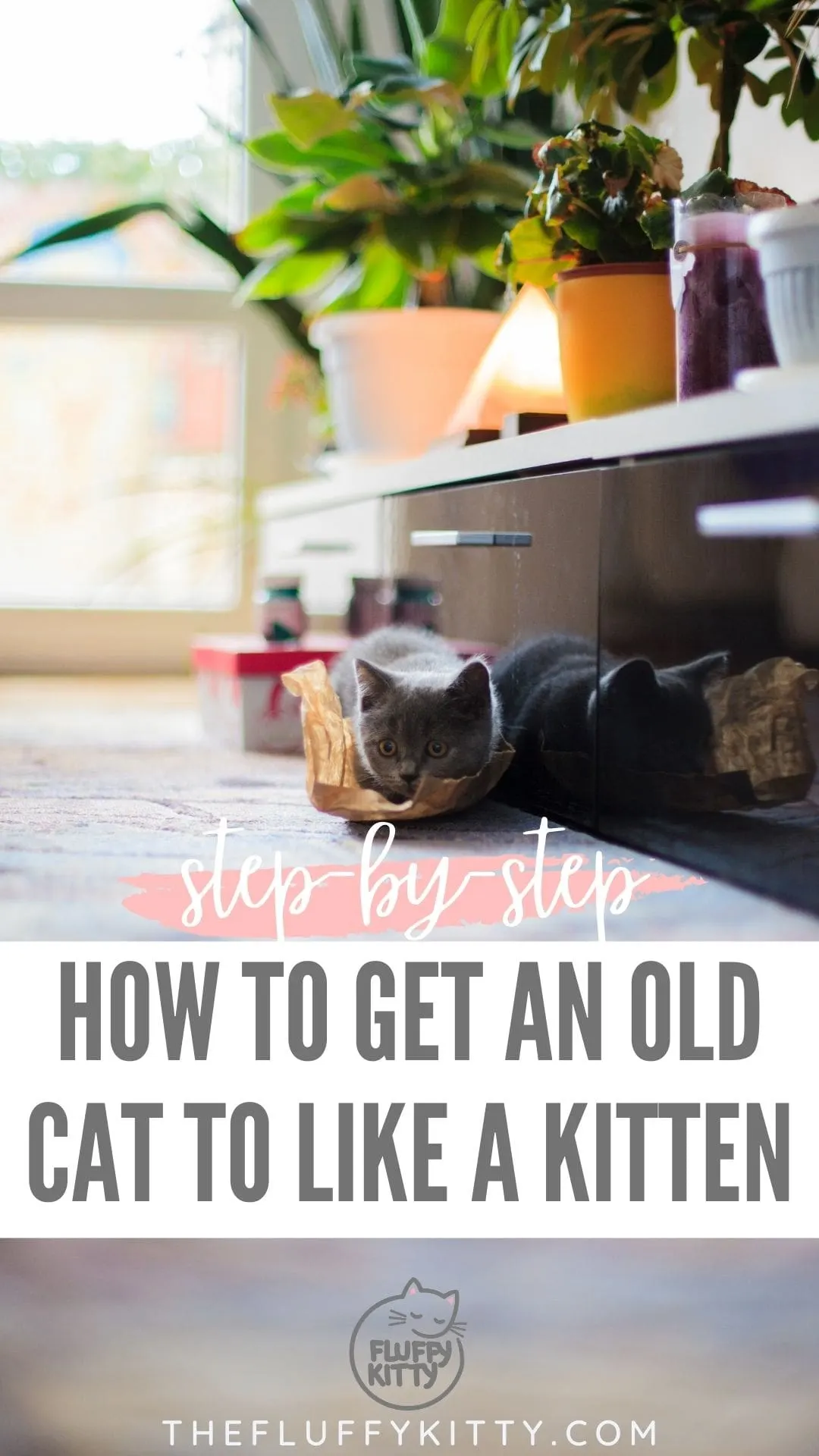
Should You Get a Kitten if You Have an Older Cat?
Will an older cat accept a kitten?
Do older cats even like kittens?
Well, the decision needs to be made on a case-by-case basis. When you are thinking about whether your older cat will accept a kitten, take the following into account:
- Personality – You know your cat and can have a gauge of their sociability and likelihood of acceptance. A relatively sociable and naturally easy-going cat is probably more likely to accept a new playmate, as opposed to a shy and nervous cat.
- Aggressive tendencies – Have you seen your kitty in the company of other cats? Do they enjoy playing without excessive fear or aggression?
If your cat has a history of hostility to other cats — hissing, growling, or marking territory if others enter your yard — then obtaining another cat is probably not a good idea. Especially a young kitten, who might be injured by an aggressive older cat.
- Age – A senior cat may not enjoy a young kitten bouncing around all over the place, whereas a young cat might love an exciting playmate. In general, adult or adolescent cats tend to like kittens much more than senior cats do.
- Matching – Matching by personality is considered a good idea. For example, if you have a very timid cat, consider choosing a similarly chilled kitten to mesh with their lifestyle.
If you are unsure or worried that a kitten might not be the best option for your new cat, you could always explore adopting or rescuing another adult. Usually, rescue organizations can help you with the matching process, and facilitate a trial period.
This way, you can be 100% sure they will be a happy family before making a lifetime commitment to the new kitty.
Here are some quick tips to get us started!
- Kittens suit younger, adolescent cats much more than a senior cat
- Multi-cat households can prevent boredom & loneliness
- Matching personalities will boost your chances of a successful pairing
- The first impression is huge, so prepare for a new kitten properly by following a step by step introduction process
- Introductions should be made slowly over several weeks, and supervision should encounter all meetings for the first few months
- Using dual play toys and calming pheromones can build a strong bond
- The chronic stress of fights between cats is not healthy for you or your pets, and sometimes separation is the more humane option
Benefits of Multi-Cat Households
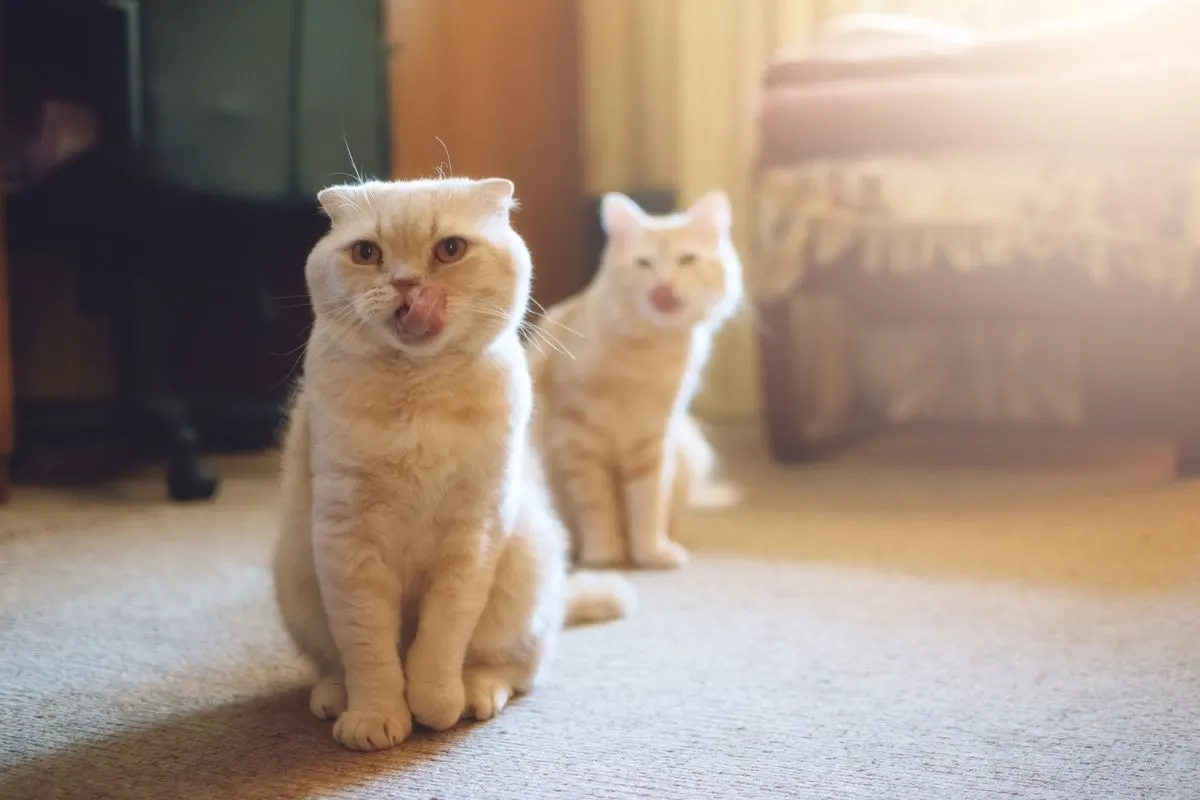
Contrary to what many memes, GIFs & cat videos might lead us to believe, cats are very social creatures. Though they can often like their own personal space, they are a family-oriented species, used to living within a close circle.
Cats that get along well will sleep together, groom each other & even share food. This is often the case when two kittens are kept together from the same litter, or two shelter cats from the same environment are adopted together. Some are even tolerant of other neighborhood cats or welcoming a new cat into their space.
Some of the main benefits of a multi-cat household:
- Loneliness will be reduced
- For 9-5 workers, your cat will be less likely to develop any separation anxiety
- Enrichment will increase with dual playtime
- Company can help a cat suffering from the loss of a sibling mate or other pet
- More cuddles for you!
However, this isn’t true for all kitties. We all know those feline divas who are higher on the needy, jealous & protective side of things—our sassy ride-or-die pets we love so much! It’s also important to understand that even seemingly tolerant kitties can struggle with a new addition.
Of course, the main drawback of a multi-cat household can be conflict. Daily fights and increased stress or anxiety create an unsustainable environment for any pets.
So if your cat is an adult, and is firmly established as the only pet in the household—think carefully before introducing a new feline friend.
Tips for Introducing Kittens to Older Cats
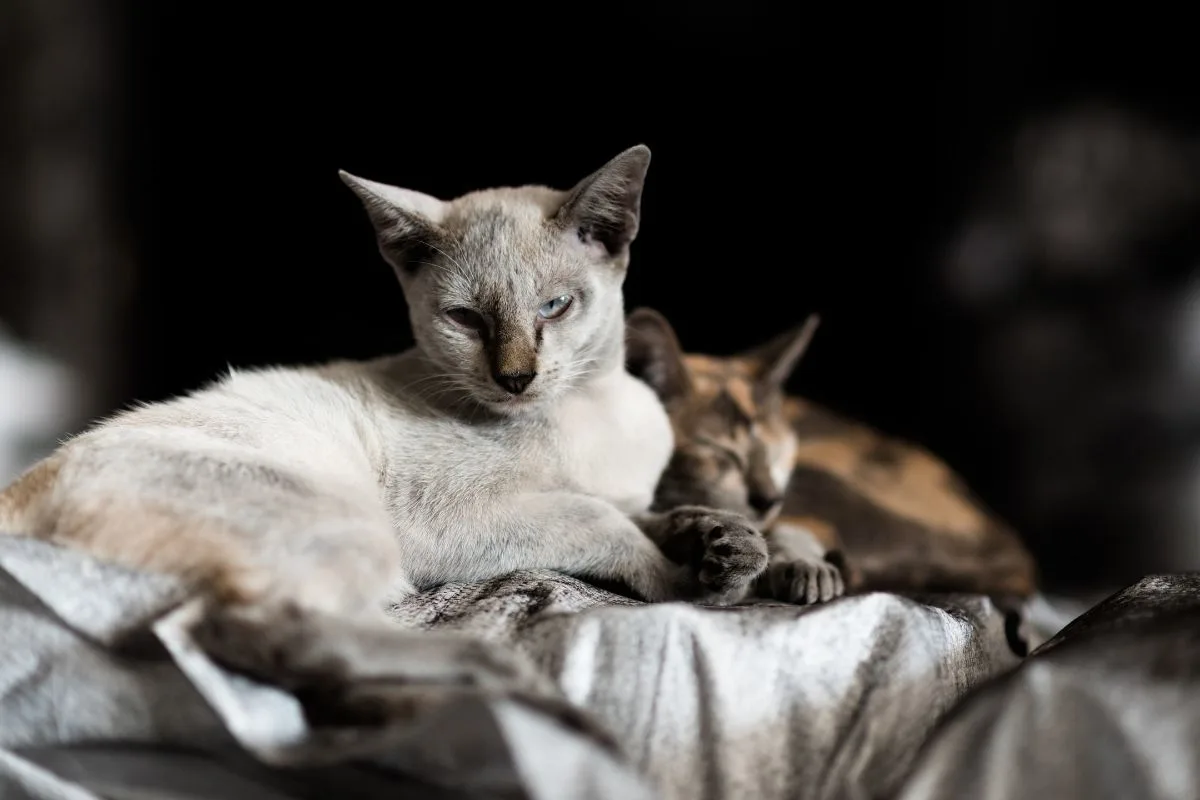
You’ve weighed up the pros and cons, you’ve studied what you know of your Fluffy Kitty and you’ve decided — you are ready to welcome a kitten.
Congratulations! Now it’s time to set yourself up for success. Which means TAKE IT SLOW.
Moving too quickly, or with a lack of preparation, is a recipe for chaos. While it can be tempting to see your cats together and exciting to introduce them, rushed introductions leave both kitties feeling threatened and scared, which increases the chance of aggressive behavior and fights breaking out.
And, sadly, once cats feel this way about each other, it can be really tough to change their minds. First impressions really count for felines!
So how do you prepare an older cat and kitten for a happy life together? Here’s our step-by-step guide to a slow and careful introduction, maximizing your chances of peaceful, pleasant co-existence.
1. Prepare Their Space
Find a space for your kitten to acclimatize, which also keeps them separate from your resident cat to start with. Often a less-trafficked room or ensuite bathroom makes a great kitten room for the first week or two.
2. Purchase The Essentials
To decrease competition or guarding. Make sure to start your kitten off with their own litter box, scratching post, and bed.
3. Start With Smells
Present your older cat with something the kitten has played with or slept on. This way, like a feline handshake, your older cat can slowly become acclimatized to the kitten’s smell.
4. Swap Bedding
Next, swap bedding between the two separate sleeping areas, to further this scent introduction.
5. Close The Gap
After a week, start to feed and play with each kitty near the door or barrier that separates them. This way they will start to get each other’s scents more clearly.
6. Reward Interest
If you see your older cat calmly investigating the barrier, then reward them with a yummy treat. This can start to build some positive associations before the first meeting.
7. Sight Introduction
If you can, switch now to a baby gate or something similar (tall enough that it can’t be easily jumped) for feeding and play sessions with your older cat. Start far away and harness your older cat if you need to, encourage calm behavior, and place attention back towards you, to encourage them to relax in the presence of the new addition.
8. Move Closer
Move a little closer to the door with each session. Over a week or so you should be able to move closer and have your older cat remain calm.
9. Swap Over
If the above steps have been successful, try swapping the cats for an hour or so a day, giving your kitten a chance to explore and more scent swapping to occur.
10. Supervised Meeting
Now you can allow your kitties to interact freely through the gate. Watch for signs of stress or aggression, and if they seem relaxed move on to the next step.
11. Remove The Barrier
Begin allowing them to share some space, but be sure to keep your supervision on high alert, for at least a month.
As you can see, welcoming a new kitten is a lot of work!
But if you follow the steps above, your chances of success and a happy feline family will be the highest they can be. So it’s absolutely worth taking the time to complete these steps slowly and thoroughly.
Toys to Help Foster Play Between Older & Younger Cats
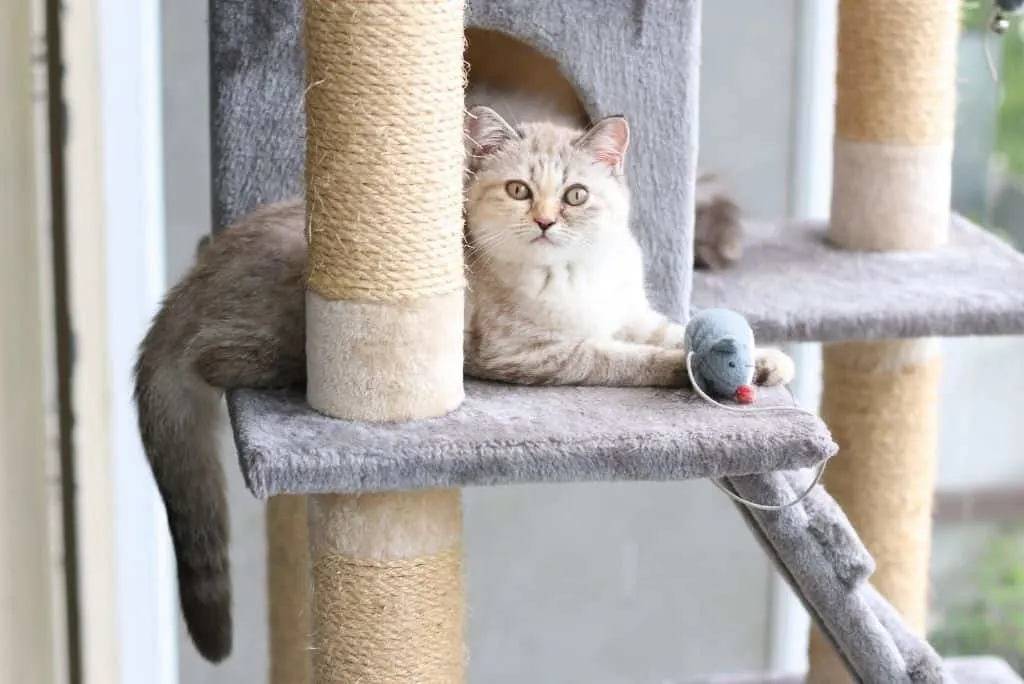
There’s nothing better than seeing your feline playmates getting along, and running a happy multi-cat household is such a joyful experience. To boost that bond, and streamline your life as an owner, here are a few amazing accessories we love:
- Feliway MultiCat Calming Diffuser Kit – This handy diffuser emits an odorless copy of the ‘harmony marker’ pheromone. This can help your cats to feel comfortable, and maintain a harmonious bond, especially in those early days.
- Go Pet Club Tree – This brand does some amazing multi-cat trees. Big enough for all the family to enjoy, with plenty of levels for a game of chase, as well as hidey spaces for some alone time.
- Eenk Cat Toy Tunnel – Perfect for adventurous playmates who love to whizz around together, this interactive crinkle tunnel is sure to get them excited.
- FURminator deShedding Tool – To keep your house from being overrun by fur, you’ll definitely want to check out FURminator’s range of amazing groping supplies.
- 2 in 1 Laser and Feather Toy – To keep both cats active and stop them fighting over toys, this dual function fun station can keep them both engaged.
- Multi-Cat Cave – This bed has dual sleeping arrangements, for those kitties that like to be close…but not too close!
- Donut Cat Bed – If your kitties really are besties, then this donut bed is big enough for some shared snuggles.
My Older Cat Is Hissing at My Kitten — What Do I Do?
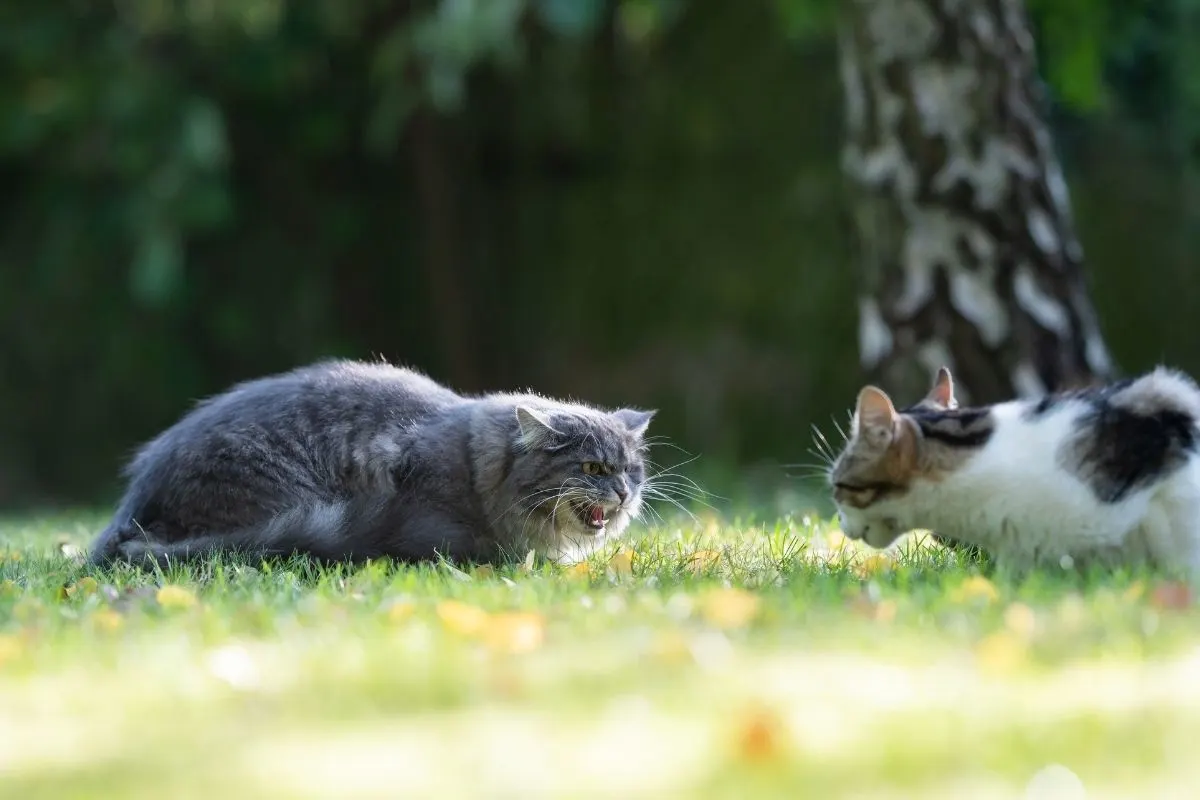
Are you worried your older cat hates your kitten?
Is an older cat growling at the new kitten?
This is simply a sign you have moved too fast. If you notice that any negativity is creeping in, don’t be afraid to take a step back and slow down your introduction.
Other signs of stress to watch for:
- Hiding
- Running away or avoiding
- Curved walking or hugging walls
- Tense muscles
- Dilated pupils
- Hair standing up along the back
- Puffed tail
- Ears pinned back
- Hissing or yowling
- Changes in litter tray usage or refusal to use the litter tray
To try and repair the relationship, you need to backtrack! Go back to step 1 and set up a safe space for your kitten. Be prepared to move at the pace your older cat feels comfortable at, as this is your best chance to create a calm relationship.
What If It Doesn’t Work Out?
All cats are individuals, and sometimes two individuals just can’t get along. Especially when it comes to pairing a kitten with an older cat.
If you are really finding the new transition isn’t working, don’t be afraid to reach out to your vet, or a qualified behaviorist to see if they can help.
You want both kitties to have the best life possible, and the chronic stress and tension caused by incompatibility aren’t good for them, or you.
In some cases, it may be more humane to keep them permanently separated, or find another home for them to enjoy.
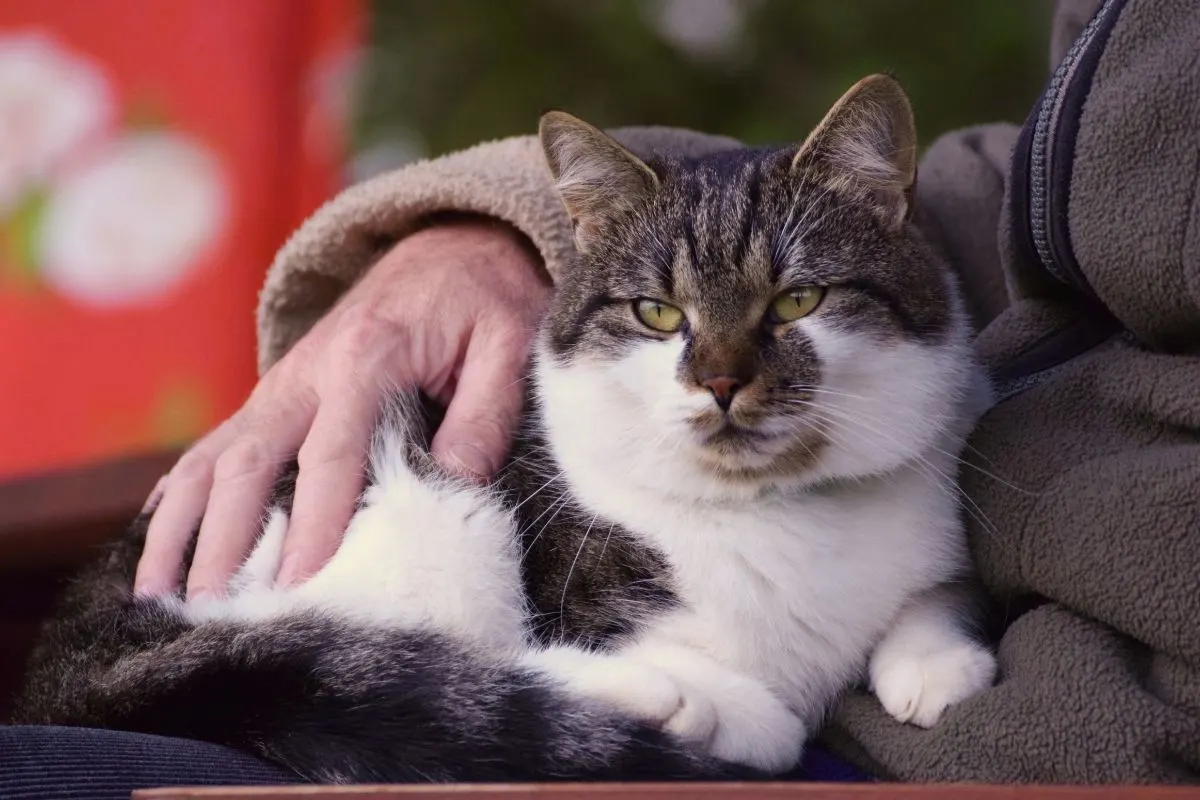
We hope this guide gives you the steps to create a successful, happy partnership in your household!
Do you have experience introducing an older cat to a kitten and vice versa? What’s your top tip for welcoming a new kitten?
